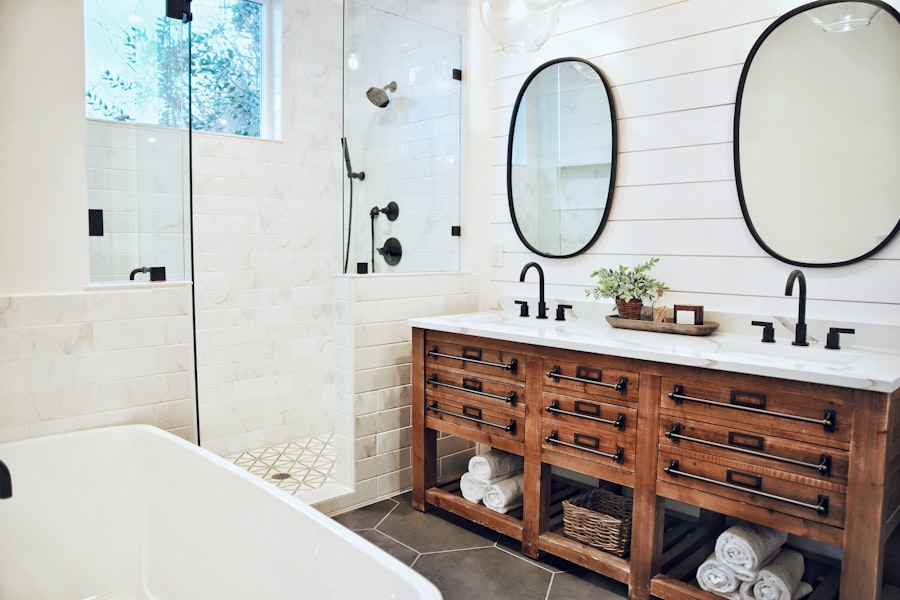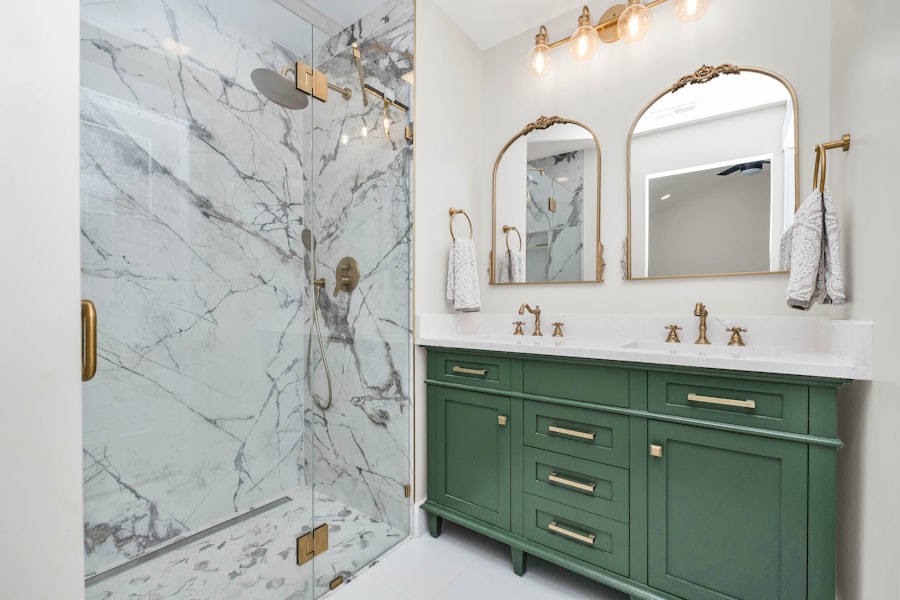Creating a budget is the cornerstone of any successful home improvement project. It serves as a roadmap, guiding decisions and ensuring that expenditures remain within manageable limits. The first step in planning your budget is to assess your financial situation.
This involves taking a close look at your income, savings, and any potential financing options. By understanding your financial landscape, you can set realistic expectations for what you can afford. It’s also wise to account for unexpected expenses that may arise during the renovation process, as these can often derail even the most meticulously planned budgets.
Once you have a clear picture of your finances, the next step is to prioritize your needs and wants. This means distinguishing between essential upgrades—such as fixing plumbing issues or replacing outdated electrical systems—and aesthetic enhancements like new countertops or decorative elements. By categorizing your projects, you can allocate funds more effectively.
For instance, if you find that your kitchen appliances are outdated and inefficient, it may be prudent to invest in energy-efficient models before splurging on high-end cabinetry. Additionally, consider setting aside a contingency fund, typically around 10-20% of your total budget, to cover any unforeseen costs that may arise during the renovation.
Key Takeaways
- Plan your budget carefully to prioritize essential renovation expenses.
- Select cost-effective materials that balance quality and affordability.
- Weigh the benefits of DIY projects against hiring professionals for complex tasks.
- Use smart storage solutions to maximize space without costly expansions.
- Refresh your space affordably by updating fixtures, hardware, and applying new paint.
Choosing Cost-Effective Materials
Selecting the right materials can significantly impact both the overall cost and the aesthetic appeal of your renovation project. Cost-effective materials do not necessarily mean compromising on quality; rather, it involves making informed choices that balance durability, functionality, and price. For example, laminate countertops can mimic the look of natural stone at a fraction of the cost, providing an attractive surface that is also easy to maintain.
Similarly, vinyl flooring has evolved dramatically in recent years, offering a wide range of styles that can replicate hardwood or tile without the hefty price tag. Another approach to choosing materials is to explore local suppliers and manufacturers who may offer discounts or sales on overstock items. This can lead to substantial savings while still allowing you to select high-quality products.
Additionally, consider sourcing reclaimed or recycled materials, which not only reduces costs but also adds character and uniqueness to your space. For instance, reclaimed wood can be used for flooring or accent walls, providing a rustic charm that new materials often lack. By being resourceful and open to alternative options, you can achieve a stylish look without breaking the bank.
DIY vs Hiring Professionals

The decision between tackling a project yourself or hiring professionals is often one of the most significant choices homeowners face during renovations. DIY projects can be incredibly rewarding and cost-effective, allowing homeowners to save on labor costs while gaining hands-on experience. Simple tasks such as painting walls, installing shelving, or even laying tile can often be accomplished with a bit of research and effort.
Online tutorials and instructional videos have made it easier than ever for individuals to learn new skills and complete projects that might have once seemed daunting. However, there are instances where hiring professionals is not only advisable but necessary. Complex tasks such as electrical work, plumbing, or structural changes require specialized knowledge and experience to ensure safety and compliance with local building codes.
Attempting these projects without proper expertise can lead to costly mistakes or even hazardous situations. Additionally, professionals often have access to better materials and tools, which can enhance the quality of the finished product. Therefore, it’s essential to evaluate your own skills honestly and determine which projects you feel confident tackling versus those that would benefit from professional intervention.
Maximizing Space with Smart Storage Solutions
| Storage Solution | Space Saved (%) | Typical Use Case | Installation Complexity | Average Cost |
|---|---|---|---|---|
| Under-bed Storage Drawers | 15-20 | Bedroom, storing clothes or shoes | Low | Moderate |
| Wall-mounted Shelves | 10-25 | Living room, kitchen, or office | Medium | Low to Moderate |
| Multi-functional Furniture | 20-30 | Small apartments, studio rooms | Low to Medium | Moderate to High |
| Over-the-door Organizers | 5-10 | Bathrooms, closets, kitchens | Low | Low |
| Pull-out Pantry Shelves | 15-25 | Kitchen storage optimization | High | Moderate to High |
| Ceiling-mounted Storage Racks | 10-20 | Garage or basement storage | High | Moderate |
In many homes, especially those with limited square footage, maximizing space is a critical consideration during renovations. Smart storage solutions can transform cluttered areas into organized havens while enhancing the overall functionality of a space. One effective strategy is to utilize vertical space by installing shelves or cabinets that reach up to the ceiling.
This not only provides additional storage but also draws the eye upward, creating an illusion of height in smaller rooms. Another innovative approach is to incorporate multi-functional furniture into your design. For example, ottomans with hidden storage compartments or beds with built-in drawers can serve dual purposes while minimizing clutter.
In kitchens, consider using pull-out pantry shelves or corner cabinets that make use of otherwise wasted space. Additionally, under-stair storage solutions can be a game-changer in homes with staircases; transforming this often-overlooked area into a practical storage zone can significantly enhance organization and accessibility.
Updating Fixtures and Hardware
One of the simplest yet most impactful ways to refresh a space is by updating fixtures and hardware. These elements often go unnoticed but play a crucial role in defining the overall aesthetic of a room. Swapping out old cabinet knobs and drawer pulls for modern designs can instantly elevate the look of kitchen or bathroom cabinetry without requiring a complete overhaul.
Similarly, replacing outdated light fixtures with contemporary options can dramatically change the ambiance of a room. When selecting new fixtures and hardware, consider the style you wish to achieve. For instance, if you’re aiming for a sleek, modern look, opt for minimalist designs in brushed nickel or matte black finishes.
Conversely, if you prefer a more traditional aesthetic, antique brass or oil-rubbed bronze may be more suitable. Additionally, don’t overlook the importance of functionality; choose fixtures that not only look good but also enhance usability. For example, installing a pull-down faucet in the kitchen can add convenience while also serving as a stylish focal point.
Repurposing Existing Elements

Repurposing existing elements within your home is an excellent way to save money while adding character and uniqueness to your renovation project. Instead of discarding old furniture or fixtures, consider how they might be transformed or integrated into your new design scheme. For example, an old wooden door can be converted into a rustic dining table or a headboard for a bed with some creative refinishing and hardware adjustments.
Another way to repurpose elements is by giving them new life through paint or refinishing techniques. A tired-looking dresser can become a statement piece in a bedroom with a fresh coat of paint and new hardware. Similarly, vintage light fixtures can be updated with modern bulbs while retaining their original charm.
By thinking creatively about how existing items can be reused or reimagined, you not only save money but also contribute to sustainability by reducing waste.
Adding a Fresh Coat of Paint
One of the most cost-effective ways to transform any space is by applying a fresh coat of paint. Paint has the power to completely change the mood and perception of a room; it can make small spaces feel larger or create an inviting atmosphere in larger areas. When selecting colors, consider the overall theme you wish to convey—soft neutrals can create a calming environment, while bold hues can add energy and vibrancy.
In addition to wall colors, don’t forget about the potential of painting trim and moldings. A crisp white trim against a darker wall color can create striking contrast and elevate the overall design aesthetic. Furthermore, accent walls are an excellent way to introduce color without overwhelming the space; this technique allows for creativity while maintaining balance throughout the room.
Whether you choose to hire professionals for this task or take it on as a DIY project, painting remains one of the most impactful ways to refresh your home’s interior.
Affordable Design Trends for a Stylish Look
Staying current with design trends doesn’t have to come at an exorbitant cost; there are numerous affordable trends that can enhance your home’s style without straining your budget. One such trend is the use of natural materials—think bamboo flooring or jute rugs—which not only add warmth but also promote sustainability. Incorporating plants into your decor has also gained popularity; they bring life into spaces while improving air quality.
Another trend gaining traction is minimalism, which emphasizes simplicity and functionality over excess ornamentation. This approach encourages homeowners to declutter their spaces and focus on quality over quantity when it comes to furnishings and decor items. By investing in fewer but higher-quality pieces that serve multiple purposes, you can create an elegant yet practical living environment.
Additionally, embracing open-concept layouts allows for greater flow between spaces while maximizing natural light—an essential element in modern design trends. By thoughtfully considering each aspect of your renovation project—from budgeting and material selection to design trends—you can create a stylish and functional home that reflects your personal taste without overspending.




